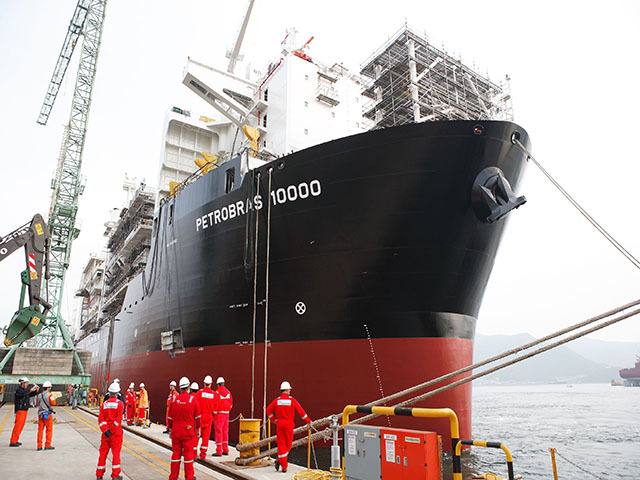
As the balloon bursts in Brazil and the party is over a lot of companies will be hit.
The corruption scandal ripping through the Brazilian oil & gas industry is the culmination of several years of what has been an industry rollercoaster, with Petrobras at the controls.
Investors in the industry might have taken the embarrassing bankruptcy of Batista’s OGX in 2013 as a sign that Brazil’s promised oil El Dorado was not all it seemed.
However, with promise of giant pre-salt fields and climbing capex programmes, the industry warmed to, if not fell in love with Brazil. It was seen as a place to make big money.
For a number of years now when someone tells me they have a service operation in Brazil, I always ask the same question – how much return are you making?
The answer is universally the same. Nothing.
Not surprising really when you have under developed infrastructure and processes, corruption, aggressive fiscal and local content policies, eye watering cost base and one client.
My advice over the years has always been don’t invest.
Your cost base will increase and your pricing will decline. Let others become the busy fools and go after smaller, more profitable markets.
Not all listened.
Why didn’t they listen?
The answer is SIZE. Brazil was to be the largest, most significant single market for offshore drilling, floating production and associated capital investments ever.
The activity levels and value of orders was enormous . . . even staggering. Tens of drilling rigs, tens of floating production systems, hundreds of offshore service vessels.
The shopping list was gargantuan and, at least until about three years ago, Petrobras talked up the opportunity wherever its top bosses travelled. They were the darling of oil & gas journalists who lapped up the staggering numbers.
And then the balloon burst.
The recent announcement of a further 41% of cuts to spending from Petrobras will now mean that “next year” will never happen. The party is over and a lot of companies will be hit, not least in Aberdeen.
On Monday, June 29, Petrobras slashed its five-year spending plan from $221billion to $130billion, while increasing planned divestures by 10% to $15.1billion.
Production estimates have been downsized by nearly 30%, with Petrobras now targeting 3.7million barrels oil equivalent per day in 2020.
For the E&P market, however, the relative funding cut is smaller, with 84% of the revised budget assigned to E&P and $64.4billion allocated to pre-salt production systems. These cuts are severe. The prior surge in Brazil’s deepwater activity was a key driver of both the global subsea hardware and floating production markets.
Petrobras’ previous plans for drilling and FPS fleet expansion were crucial for global deepwater capex growth in the next five years, with Latin America accounting for 34% of expected growth to 2019.
This is now at risk, with estimates suggesting only half of the 29 Petrobras-contracted FPS may be built; while the updated business plan already represents a 10% drop in Douglas-Westwood’s forecasted subsea tree installations over the next five years.
The further loss of assets and budgeted capital, particularly in deepwater, will sluice throughout the supply chain.
However, the focus on pre-salt exploration and production in the new five-year plan will help maintain some of the supply chain for subsea hardware and vessels, although there will be significant shrinkage in the market and inevitably some losers as a result.
We can expect further cutbacks from the major service providers across Latin America, but it is likely that the subsea equipment providers, offshore logistics providers and offshore rig companies in Brazil will most strongly feel the pinch.
With the oil & gas industry facing its most severe cyclical downturn years, major doubts over the ability of Petrobras and the Brazilian market to deliver its long-awaited promise is a difficult pill for investors to swallow.
However, Petrobras’ divestment outside of Brazil has been ongoing for the last two years and, although negative, new divestment plans should be contextualised before predicting the end of Brazil’s deepwater industry.
It must also be noted that Petrobras’ significant accrued debt is largely related to the expensive services and technology related to pre-salt drilling and could be seen as long-term investment as opposed to capital lost.
Once the brunt of the cuts have hit the industry there may be long-term benefits to Petrobras’ downfall as market pressure and indicated government reforms could open the market to newcomers with a tempered view of Brazil’s potential.
All eyes are on the 13th Brazilian Licensing Round this autumn. The Brazilian market must take measures to regain rapidly diminishing investor confidence in its offshore sector, and make amends for a disastrous 12 months for Petrobras.
As this semi-NOC (the company is partially listed) moves away from its enduring corruption scandal, the ability of Petrobras’ new leadership to provide rattled investors with the confidence they seek will prove key.
Until then, investors would be well-advised to proceed with caution.
Andrew Reid is chief executive of Douglas-Westwood.